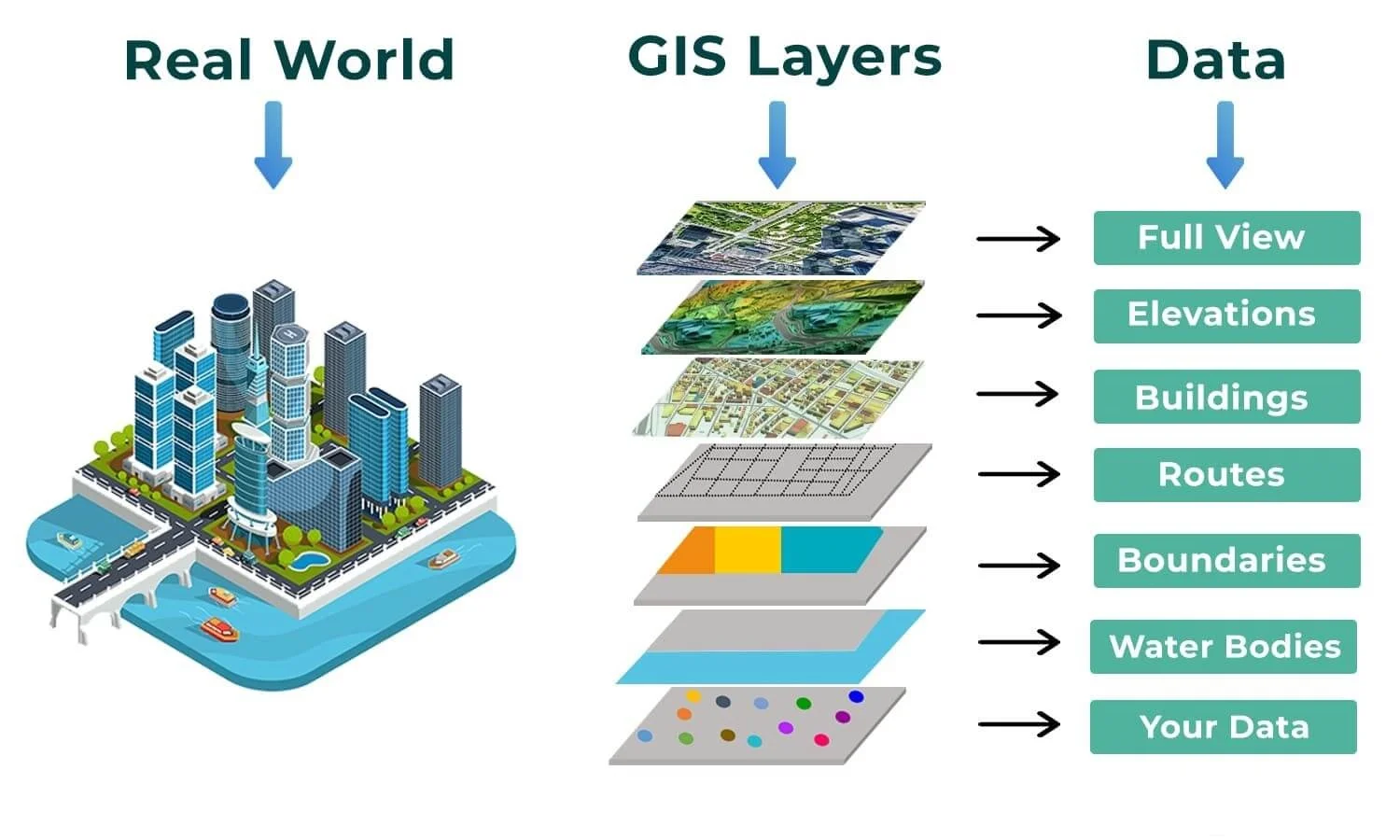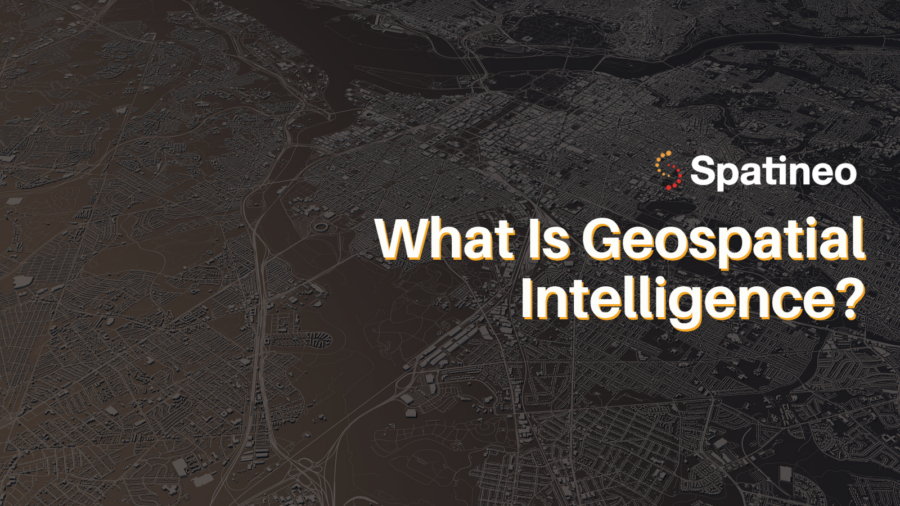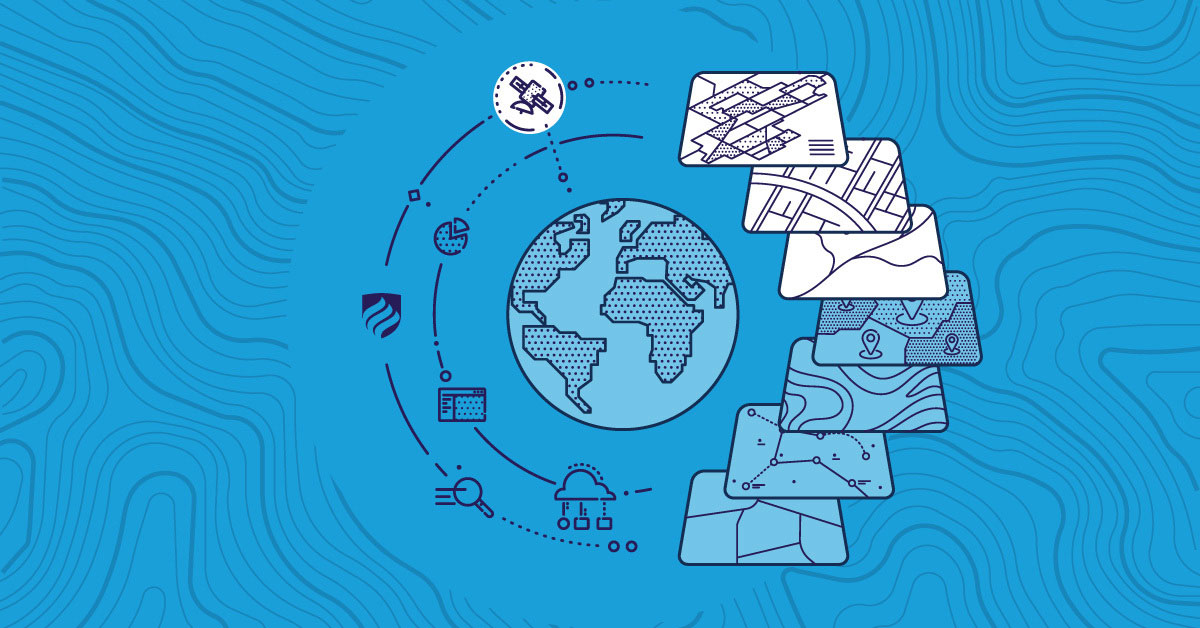In today’s increasingly data-driven world, geospatial analysis plays a vital role in everything from urban planning and environmental monitoring to disaster management and business logistics. But what exactly does a geospatial analyst do, and why is this profession so essential across multiple industries?
A geospatial analyst specializes in interpreting and analyzing spatial data to create detailed maps, models, and insights that help organizations make informed decisions. They combine advanced software, geographic information systems (GIS), and various data sources like satellite imagery and sensors to understand spatial relationships and trends. This expertise allows them to solve complex problems related to geography, environment, infrastructure, and more.
Whether it’s tracking deforestation patterns in the Amazon, helping telecom companies plan 5G networks, or designing flood prevention systems, geospatial analysts are the backbone of many critical decisions.

What Is Geospatial Analysis?
Before diving into the specifics of what a geospatial analyst does, it’s important to understand what geospatial analysis is. At its core, geospatial analysis involves using spatial data—information related to the Earth’s surface—to uncover patterns, relationships, and insights that may not be immediately apparent from other types of data.
Geospatial analysis typically involves:
- Geographic Information Systems (GIS): A system used to store, manage, and analyze spatial data. GIS tools allow analysts to create layered maps that visualize different types of geographic information, such as land use, population density, or environmental factors.
- Remote Sensing: The collection of data from satellites, drones, or other aerial platforms to gather information about the Earth’s surface. This data can include images, elevation models, and even environmental conditions.
- GPS Technology: GPS provides accurate location data that is critical for many geospatial applications, such as navigation, asset tracking, and field data collection.
Unlike traditional data analysis, which might focus on numbers in spreadsheets, geospatial analysis focuses on spatial relationships. For example, it might be used to find out how proximity to a highway affects property values, or how environmental changes are influencing animal migration patterns.
One of the key benefits of geospatial analysis is its ability to reveal patterns that would otherwise go unnoticed. This makes it particularly valuable in fields like urban planning, environmental conservation, disaster management, and even business optimization.

What Are the Key Responsibilities of a Geospatial Analyst?
The role of a geospatial analyst can vary depending on the industry, but there are core responsibilities that are common across most fields. Geospatial analysts are tasked with turning raw geographic data into meaningful insights, often to support decision-making processes in industries ranging from environmental management to urban development and beyond. Here’s a breakdown of the key responsibilities that define the role of a geospatial analyst:
1. Data Collection
Geospatial analysts are responsible for gathering various types of data from different sources. These sources can include:
- Satellite Imagery: High-resolution images captured from space, useful for analyzing land use, environmental changes, and even disaster management.
- Aerial Drones: Drones are increasingly used to collect real-time, high-precision data for tasks like monitoring infrastructure or surveying agricultural land.
- GPS Systems: Data from GPS devices can track locations and movements, which is critical for fields like logistics and transportation.
- Public and Private Databases: Analysts may pull from existing datasets on population, demographics, economic activity, or natural resources.
This data collection is the foundation of all geospatial analysis and requires not only technological proficiency but also a keen understanding of how to obtain relevant and accurate information.
2. Data Processing
Once data is collected, it often needs to be cleaned and formatted for analysis. Geospatial analysts spend a significant amount of time processing raw data into usable formats by:
- Converting different types of data (e.g., from raster to vector formats).
- Cleaning data by eliminating errors, duplicates, or inconsistencies.
- Georeferencing, which involves aligning data to known geographic coordinates so that it can be accurately mapped.
This step is crucial because poorly processed data can lead to inaccurate analyses and, ultimately, poor decision-making.
3. Spatial Data Analysis
The core of the geospatial analyst’s work is in analyzing spatial data. This involves using specialized tools, like GIS software, to identify patterns and relationships within the data. For example:
- In urban planning, analysts might study how proximity to transportation hubs affects housing prices.
- In agriculture, they may analyze how soil composition and climate conditions impact crop yields.
- In environmental conservation, geospatial analysts could track how deforestation is impacting wildlife habitats over time.
By interpreting this data, geospatial analysts can offer valuable insights that drive strategic decisions for companies, governments, and organizations.
4. Mapping and Visualization
A significant part of a geospatial analyst’s job is to present data in an understandable and visually compelling way. This often involves creating:
- Interactive Maps: These allow users to explore geographic data and patterns, often including multiple layers of information.
- 3D Models: In some cases, 3D visualizations are necessary to showcase terrain, urban structures, or environmental features.
- Reports and Graphs: Geospatial analysts also need to generate reports that clearly communicate their findings, often using charts, tables, and graphs.
For example, in the case of natural disaster management, maps showing flood zones or earthquake-prone areas can help authorities plan evacuation routes or prioritize infrastructure upgrades.
5. Reporting and Presenting Insights
After conducting the analysis, the next step is communicating these insights to decision-makers. This involves:
- Creating detailed reports summarizing the findings and offering actionable recommendations.
- Presenting insights through visualizations and models during meetings or briefings, especially for stakeholders who may not have a technical background.
- Collaborating with other teams: Geospatial analysts often work closely with engineers, policymakers, urban planners, or business leaders to ensure that the insights they provide are understood and applied effectively.
In a real-world example, a geospatial analyst working in the transportation sector might analyze traffic flow data and provide city planners with visual models that help improve road networks, reducing congestion and improving safety.
Each of these responsibilities requires a unique blend of technical skill, spatial awareness, and communication abilities. This combination allows geospatial analysts to not only interpret complex data but also provide actionable insights that lead to tangible improvements in various sectors.

Where Do Geospatial Analysts Work?
Geospatial analysis has become an indispensable tool in a wide range of industries, from government agencies to private companies, and even non-profit organizations. The versatility of geospatial data and its applications make geospatial analysts highly sought after in many fields. Here’s a look at the most common sectors where geospatial analysts can be found, along with real-world examples of their impact.
1. Environmental Management
One of the most prominent industries employing geospatial analysts is environmental management. Here, geospatial data is used to monitor and manage natural resources, track environmental changes, and support conservation efforts. Some key tasks in this sector include:
- Monitoring deforestation: Geospatial analysts use satellite imagery to observe changes in forest cover over time, which can help in creating conservation strategies.
- Tracking wildlife populations: By mapping animal movements through GPS collars and drones, geospatial analysts help conservationists understand migration patterns and habitat use.
- Disaster management: Analysts track and predict the impact of natural disasters like floods, wildfires, and hurricanes, providing essential data for emergency response efforts.
Case Study: In Brazil, geospatial analysts played a key role in monitoring the rapid deforestation of the Amazon rainforest. By using satellite data, they were able to map the areas most affected by illegal logging and develop strategies to mitigate further environmental damage.
2. Urban Planning and Development
Urban planning is another field where geospatial analysis has a major influence. Analysts provide city planners with data that helps them design efficient, sustainable cities. Some common uses include:
- Designing transportation systems: Geospatial data helps planners optimize road networks, public transportation routes, and bike lanes to reduce traffic congestion and pollution.
- Infrastructure development: By analyzing population density, land use, and proximity to essential services, geospatial analysts help determine where new infrastructure like schools, hospitals, and housing developments should be built.
- Green space planning: Analysts can identify areas with limited access to parks or recreational spaces, ensuring that future development includes adequate green areas.
Example: The city of New York uses geospatial analysis to plan infrastructure projects, such as improving subway routes or identifying areas vulnerable to flooding due to climate change.
3. Agriculture
In the agricultural sector, geospatial analysis is key to optimizing land use, monitoring crop health, and improving yields. Precision agriculture, which relies heavily on geospatial data, allows farmers to:
- Monitor soil conditions: Geospatial tools help map variations in soil composition, moisture, and nutrients, ensuring that farmers can apply fertilizers and water efficiently.
- Track crop health: Drones equipped with multispectral sensors provide data on crop health by identifying areas of stress or disease, allowing for targeted interventions.
- Optimize planting strategies: By analyzing climate data and land conditions, geospatial analysts can recommend the best planting strategies to maximize crop yield.
Fact: According to the U.S. Department of Agriculture, farms that use geospatial technology see an average yield improvement of 15% through optimized planting and resource allocation.
4. Military and Defense
The military has long relied on geospatial data for strategic planning and operations. Geospatial analysts in the defense sector use data to:
- Map terrain and plan missions: Analysts create detailed terrain models that help military planners understand elevation, land cover, and potential obstacles for ground operations.
- Track enemy movements: Geospatial data, often gathered through satellites or drones, helps monitor the movement of enemy forces and detect potential threats.
- Enhance logistics: By mapping supply routes and identifying choke points, analysts ensure that military logistics are optimized for efficiency and security.
Example: During humanitarian missions, military geospatial analysts often play a critical role in mapping disaster-stricken areas, enabling rapid response and the efficient distribution of aid.
5. Government and Public Sector
Government agencies rely on geospatial analysis for everything from disaster management to census tracking. Some common applications include:
- Disaster response planning: Geospatial analysts help predict and prepare for natural disasters by mapping risk zones, such as floodplains or areas prone to earthquakes.
- Public health: Analysts map the spread of diseases like COVID-19, enabling health agencies to allocate resources and implement effective containment strategies.
- Census and demographic analysis: Government agencies use geospatial data to map population trends, allowing them to better plan infrastructure, social services, and policy decisions.
Case Study: During the COVID-19 pandemic, geospatial analysts played a crucial role in tracking the spread of the virus. By mapping infection hotspots, public health agencies could more effectively deploy resources and enforce localized lockdowns.
6. Technology and Telecommunications
In the tech and telecom sectors, geospatial data is used to plan and optimize networks, such as 5G infrastructure. Some key uses in this industry include:
- Network optimization: Telecom companies use geospatial data to determine where to place cell towers, ensuring maximum coverage and signal strength.
- Location-based services: Companies like Uber and Google Maps rely on geospatial analysts to improve the accuracy and reliability of their location-based services.
- Augmented reality: Geospatial data plays a critical role in developing AR applications, which rely on accurate maps and spatial information to function correctly.
Example: Telecom companies in the U.S. and Europe are leveraging geospatial analysis to plan the rollout of 5G networks, ensuring that antennas are placed in optimal locations to maximize coverage.
7. Freelancing and Consulting
With the increasing demand for geospatial analysis across sectors, many analysts choose to work as freelancers or consultants. This allows them to apply their skills in a variety of industries and projects, such as:
- Environmental impact assessments: Consultants help companies and governments assess the environmental impact of proposed construction projects or industrial activities.
- Real estate: Freelancers provide geospatial insights for real estate developers, helping them determine the best locations for new projects based on land use, zoning laws, and market trends.
- Disaster risk management: Consultants are often hired by international organizations or governments to analyze the risk of natural disasters and propose mitigation strategies.
Geospatial analysts have the flexibility to work in a wide range of industries, each offering its own unique challenges and opportunities. Whether contributing to environmental conservation or designing future cities, geospatial analysts play a critical role in shaping the world around us.

What Skills Are Needed to Become a Geospatial Analyst?
Becoming a successful geospatial analyst requires a diverse set of skills, combining technical knowledge with spatial thinking and problem-solving abilities. Whether working in urban planning, environmental conservation, or telecommunications, geospatial analysts rely on both hard and soft skills to interpret complex geographic data and present actionable insights. Below is a breakdown of the key skills necessary to thrive in this field.
1. Technical Skills
a. Proficiency in GIS Software
Geographic Information Systems (GIS) software is the primary tool that geospatial analysts use to map, analyze, and visualize spatial data. Familiarity with both commercial and open-source GIS tools is critical for data processing and analysis. Some of the most commonly used GIS platforms include:
- ArcGIS: Developed by Esri, ArcGIS is one of the most widely used commercial GIS platforms. It offers comprehensive tools for mapping, spatial analysis, and geoprocessing.
- QGIS: An open-source alternative to ArcGIS, QGIS is highly flexible and customizable, making it popular among freelancers and organizations that prefer free software.
- Google Earth Engine: This platform is especially useful for remote sensing applications, offering access to satellite data and other geographic datasets for analysis.
Tip: Mastering tools like ArcGIS and QGIS is often a key requirement for most geospatial analysis roles, so consider taking courses or obtaining certifications to enhance your qualifications.
b. Understanding Remote Sensing Techniques
Remote sensing involves gathering data about the Earth’s surface without direct contact, typically through satellites, drones, or aircraft. Geospatial analysts need to understand how to process and analyze remote sensing data to gain insights about terrain, land use, and environmental conditions. Key tasks in remote sensing include:
- Interpreting satellite imagery for land use changes.
- Using drones to collect real-time, high-resolution geographic data.
- Analyzing multi-spectral or hyper-spectral imagery for environmental monitoring.
c. Data Analysis and Programming
In addition to GIS software, geospatial analysts often work with data analysis tools and programming languages to process and analyze large datasets. Some essential skills include:
- Python: One of the most commonly used programming languages for geospatial analysis. Python is useful for automating tasks, running spatial analysis algorithms, and processing data.
- R: Particularly useful for statistical analysis and creating visual data models.
- SQL: A database language used to query and manage spatial databases. Understanding SQL is essential for working with large datasets stored in geospatial databases like PostGIS.
Fact: A survey by GIS Geography revealed that 58% of geospatial professionals identified Python as the most useful programming language for their work.
d. Spatial Thinking
Spatial thinking refers to the ability to visualize spatial relationships between objects or geographic entities. This skill is critical for analyzing patterns, trends, and distributions within geographic data. For example, when planning a new transportation network, spatial thinking helps geospatial analysts consider how road placement will affect traffic patterns, accessibility, and the surrounding environment.
2. Soft Skills
a. Communication Skills
One of the most important aspects of the geospatial analyst role is the ability to convey complex data insights to non-technical stakeholders, such as city planners, government officials, or business leaders. Effective communication involves:
- Presenting findings in clear, simple language.
- Creating visualizations (maps, graphs, charts) that make data easy to understand.
- Writing comprehensive reports that summarize key insights and offer actionable recommendations.
Example: A geospatial analyst working with urban planners might need to explain how different land use patterns could affect future traffic congestion. This requires both technical expertise and the ability to communicate these findings in a way that city officials can easily grasp.
b. Problem-Solving Abilities
Geospatial analysts often face complex challenges, whether it’s finding patterns in large datasets or determining the best way to represent geographic data. Problem-solving skills are essential for:
- Identifying data inaccuracies and correcting them.
- Finding innovative ways to present spatial data to address specific challenges, such as environmental degradation or urban sprawl.
- Balancing competing interests and objectives when making recommendations, such as balancing development with environmental sustainability.
c. Critical Thinking
Critical thinking is key when interpreting spatial data. Geospatial analysts must:
- Question the validity of data sources.
- Interpret data patterns and trends.
- Evaluate the impact of different variables on geographic phenomena. For instance, in environmental monitoring, a critical thinker would not only analyze the data but also consider factors like climate change, human activity, and policy impacts on environmental degradation.
3. Interdisciplinary Knowledge
Geospatial analysts often work at the intersection of multiple disciplines, requiring a broad knowledge base in subjects such as:
- Geography: Understanding physical landscapes, ecosystems, and how geographic features interact with human activities.
- Environmental Science: Particularly important for analysts working in conservation or disaster management, where knowledge of ecosystems, climate change, and natural resources is essential.
- Urban Studies: For those in urban planning, understanding land use, population growth, and infrastructure needs is critical to effective analysis and decision-making.
4. Certifications and Continuous Learning
Because technology in the geospatial field evolves rapidly, continuous learning is crucial for staying updated with the latest tools and techniques. Obtaining certifications in GIS and related technologies can boost a geospatial analyst’s career prospects. Some popular certifications include:
- Esri Technical Certification: Focuses on proficiency in using Esri’s ArcGIS software.
- Certified GIS Professional (GISP): A globally recognized certification that validates your expertise in geospatial analysis and GIS.
- Remote Sensing Certifications: Offered by various organizations, these certifications demonstrate expertise in remote sensing technologies and applications.
Fact: According to research by Geospatial World, professionals with specialized certifications, such as GISP, often earn higher salaries compared to those without.
Developing a well-rounded skill set in both technical and soft skills is essential for any aspiring geospatial analyst. These skills not only enable you to work effectively with geospatial data but also empower you to present your findings in ways that drive meaningful change, whether it’s optimizing a city’s infrastructure or monitoring environmental health.